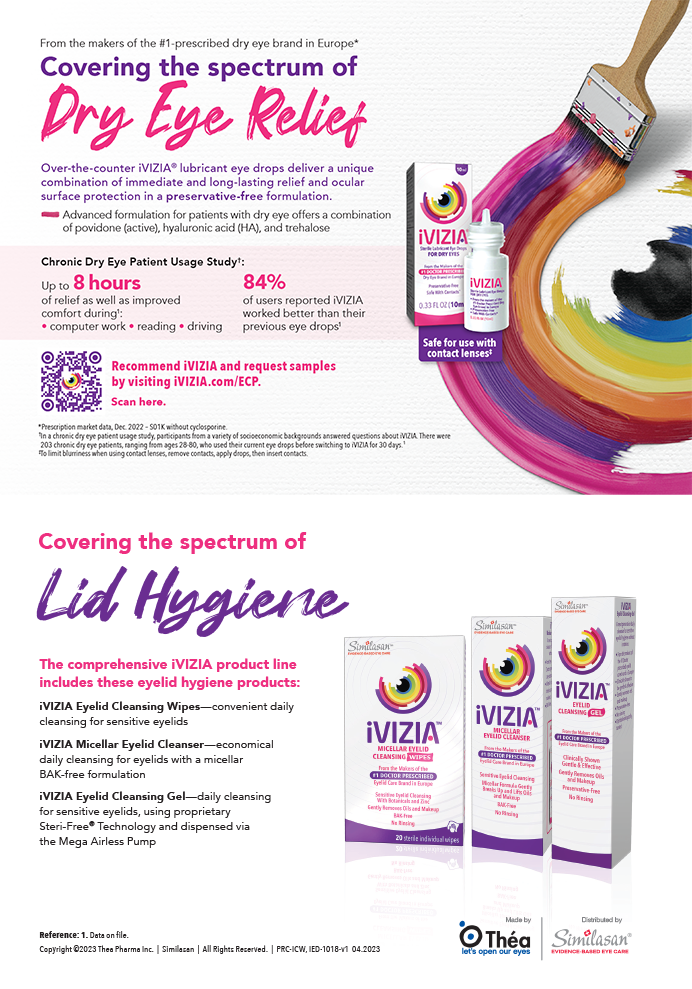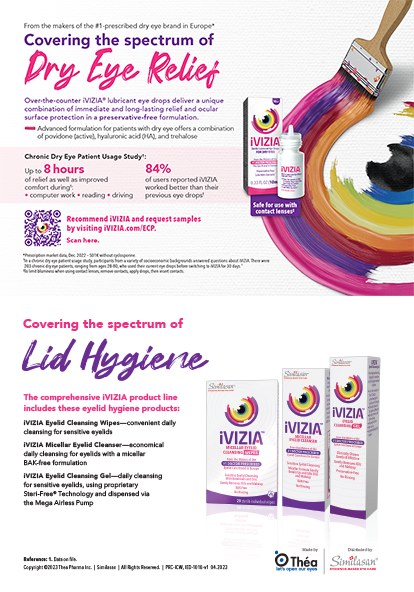As incisions for cataract surgery continue to diminish in size, the surgeon is faced with several challenges. “Oarlocking” may limit the maneuverability of the phaco and I/A tips. Tearing, molding, or stretching of the incision is also more likely to occur. Greater friction within the incision may increase the amount of heat generated during ultrasound and impede the smooth passage of an IOL when the incision is intended to serve as an extension of the cartridge. Greater resistance may also result in an abrupt “pop” of either the blade or the IOL as the anterior chamber is entered, causing inadvertent capsular damage. Reducing the incision's size should not create disadvantages or hurdles.
To realize the benefits of a smaller incision, I designed a guarded safety blade for microcoaxial phacoemulsification with Beaver-Visitec International, Inc. The internal flare incision, recently reported in the Journal of Cataract and Refractive Surgery,1 may be used with any small-incisiontechnique, including microincisional cataract surgery and even incisions made by the femtosecond laser. By combining the blade's design with a modification in the incision's construction, surgeons can easily overcome the hurdles of the smaller incision.
BLADE'S DESIGN
A shielded blade maximizes safety for the surgeon and the scrub technician. The possibility of inadvertent damage to the lens is reduced by shortening the length of the blade and changing the geometry. Tearing of the lateral margin of the incision can be prevented by eliminating side cutting. A visible score across the blade gives the surgeon a visual cue for how the blade must enter to achieve the incisional anatomy that he or she is attempting to reproduce. Precise incisional size and area afford the most predictability in determining surgically induced astigmatism. The blade's sharpness must be exquisite, but there should still be a “feel” as the surgeon maneuvers the blade. For this reason, even though I was one of the initial surgeons to design and develop diamond knives for cataract surgery in the early 1980s, I prefer making the entry into the anterior chamber using the metal blade from Beaver-Visitec International, Inc.
MY TECHNIQUE
Regardless of whether the surgeon favors a 1-, 2-, or 3-plane incision, after the entry into the anterior chamber has been made (Figure A), the blade is withdrawn approximately 0.5 mm into the tunnel with the tip remaining inside the anterior chamber (Figure B). The blade is angled toward one lateral border of the incision (Figure C) to allow a second advance into the chamber, which creates an internal flare (Figure D). The blade is withdrawn again (Figure E), angled toward the other lateral border of the incision (Figure F), and then advanced into the anterior chamber to complete the internal flare. The blade is withdrawn a final time, removed from the incision (Figure G), reshielded, and passed to the scrub technician. With a 2.2-mm knife, for example, the internal flare has an outer diameter of 2.2 mm and an internal diameter of approximately 2.5 mm (Figure H).
In my experience, the internal flare promotes increased maneuverability of the phaco and I/A tip while reducing the resistance associated with a small, tight incision. The result is less compression of the ultrasound tip and the I/A tip within the incision, thus providing a thermoprotective effect. With less resistance, there is noticeably less movement of the globe and less distortion of the incisional tunnel. Access to the para-incisional cortex is facilitated by the flare, and I find it is easier to inject the IOL into the anterior chamber if I use the incision as an extension of the cartridge.
CONCLUSION
After sharing this internal flare incision with many surgeons, the feedback I have received has been very positive. Surgeons have observed improved maneuverability of instruments, easier insertion of the lens, and a consistently watertight closure. Robert Cionni, MD, of Salt Lake City, a pioneer in femtosecond laser cataract surgery, advocates this technique for constructing incisions with the LenSx Laser (Alcon Laboratories, Inc.). The internal flare incision may represent a minimal modification in the evolution toward microincisional cataract surgery, but small improvements are welcome if they make incisions easier for the surgeon and safer for patients.
Robert H. Osher, MD, is a professor of ophthalmology at the University of Cincinnati, medical director emeritus of the Cincinnati Eye Institute, and editor of the Video Journal of Cataract and Refractive Surgery. He is a consultant to multiple companies, including Beaver-Visitec International, Inc., but acknowledged no financial interest in the products mentioned herein. Dr. Osher may be reached at (513) 984-5133, ext. 3679; rhosher@cincinnatieye.com.
- Osher RH. Internal flare: modification of wound construction for micro-incisional cataract surgery. J Cataract Refract Surg. 2012;38:721-722.


